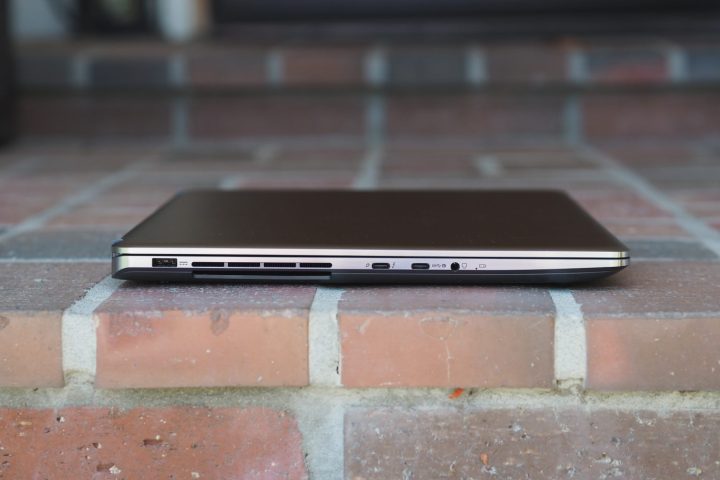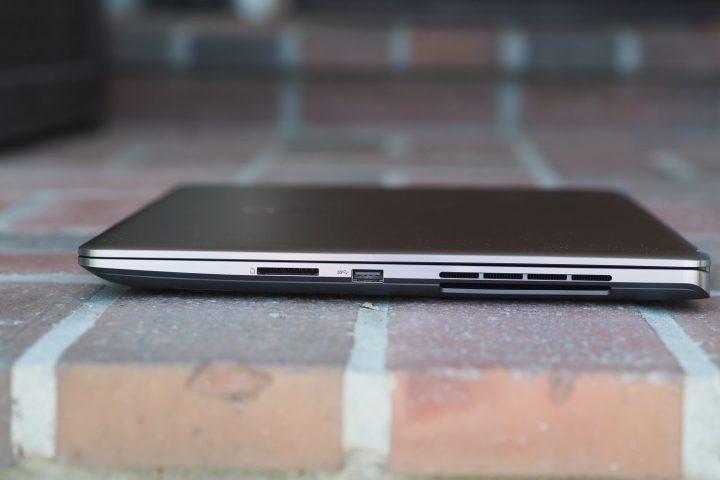- Excellent productivity and creative performance
- Solid build quality
- Modern good looks
- Great keyboard and touchpad
- Very good display
- Expensive
- Poor gaming performance
Laptops designed for creative professionals have become extremely popular over the last several years. Every manufacturer has a line or two aimed at creative work, none more so than MSI with its aptly named Creator series. The company recently updated the Creator Z16 that we reviewed last year with the Creator Z16P, improving the thermal design and upgrading to Intel’s 12th-gen CPUs.
I reviewed the top-end configuration that’s $4,299 with a Core i9-12900H, an Nvidia RTX 3080 Ti, and a 16-inch 16:10 QHD+ (2,560 x 1,600) IPS display. Those are some serious components that promise excellent content creation performance, and the Creator Z16P lived up to its promise. It’s a well-built and attractive laptop that, while very expensive, competes strongly against other large creator workstations — so long as you stay away from gaming.
Design
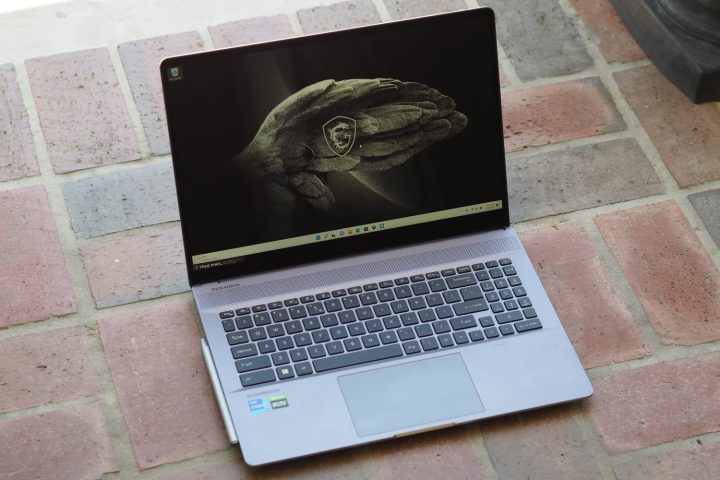
The Creator Z16P is a solidly built laptop constructed of CNC-machined aluminum. There’s no flexing, bending, or twisting in the lid, keyboard deck, or chassis. The Creator Z16 was equally well built, putting MSI’s premier creator’s laptops in good company with the best you’ll find, including the Dell XPS 15 and XPS 17 and Apple MacBook Pro 16. MSI subjected the Creator Z16P to MIL-STD-810G testing for durability, which Lenovo also does with its ThinkPad line and provides some additional confidence.
Aesthetically, the Creator Z16P subtly betrays MSI’s gaming laptop roots. Its dark gray color scheme and overall lines are conservative enough, with only a subdued MSI logo on the lid providing a decorative accent. But open the lid, and you’ll see per-key RGB lighting on the SteelSeries keyboard that’s incongruent with a laptop intended for productivity and creative work. Plus, there are aggressive vents along each side that you usually see on gaming machines. Even so, it’s an attractive look, if a bit bold. The XPS 15, XPS 17, and MacBook Pro 16 are more businesslike by comparison.
The Creator Z16P has small bezels around the sides and top of its 16:10 16-inch display, with a slightly larger chin than you’ll find on the XPS 15. It’s identical to the Creator Z16 in width and depth, but it’s thicker at 0.75 inches versus 0.64 inches and heavier at 5.27 pounds versus 5.07 pounds.
That’s accounted for by an upgraded thermal design. The Prestige Z16P is within fractions of an inch in width and depth of the Lenovo ThinkPad x1 Extreme Gen 4, another 16-inch performance laptop, which is thinner at 0.70 inches and significantly lighter at 3.99 pounds. Overall, the Creator Z16P is a large laptop that you won’t want to lug around any more than you must.
Ports and connectivity
Connectivity is a little limited for such a large laptop, with two USB-C ports, (one with Thunderbolt 4 support), a USB-A 3.2 Gen 2 port, a 3.5mm audio jack, and a full-size SD card reader. Power is provided by a proprietary connector and a 240-watt power supply.
There’s no HDMI port, which you often find on larger machines, and just one Thunderbolt 4 port is disappointing.
Wi-Fi 6E and Bluetooth 5.2 provide up-to-date wireless connectivity.
Performance
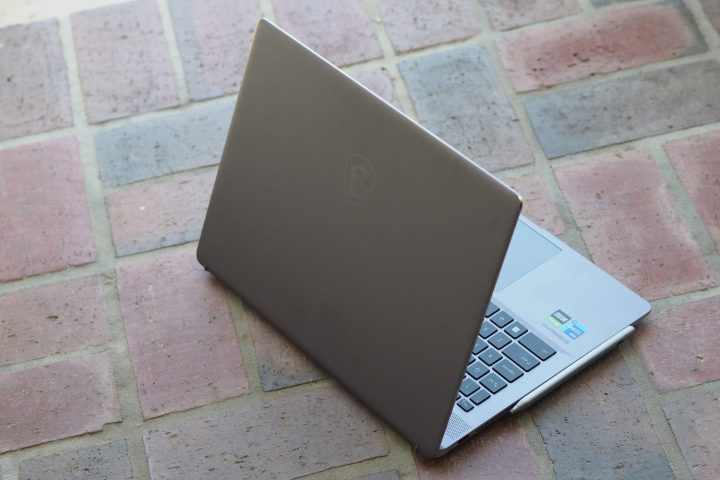
The Creator Z16P can be configured with one of several 45-watt Intel 12th-gen CPUs, and my review unit was equipped with the Core i9-12900H. That’s a 14-core (six Performance and eight Efficient), 20-thread CPU running at up to 5.0GHz. Paired with that was an Nvidia GeForce RTX 3080 Ti, with Nvidia’s Studio drivers aimed at providing the highest performance and reliability in a selection of creative, engineering, and scientific applications. On paper, the Creator Z16P should be a speedy laptop indeed.
My benchmarks confirmed it. The Creator Z16P scored the highest among our comparison group in Geekbench 5 when set in both balanced and performance modes using the MSI Center Pro utility that provides precise control over thermals. For the most part, the utility had less impact than I’ve seen in other MSI laptops, but it wasn’t because the laptop’s thermal design limited its ceiling — I noticed only some minor throttling in performance mode. One difference between this model and the previous Creator Z16 is the introduction of a vapor chamber cooler providing 76% more cooling area and fans that provide 65% more airflow. Overall, the thermal system did its job.
In our Handbrake test that encodes a 420MB video as H.265, the Creator Z16P was again the fastest, including beating the MSI GE76 Raider gaming laptop that’s thicker and has even better thermals. The only synthetic benchmark where the Creator Z16P didn’t take first place was Cinebench R23, and here it was just barely behind the GE76 Raider.
While the MSI Center Pro performance tuning utility didn’t have much impact in most of our benchmarks, there was a massive difference in the Pugetbench Premiere Pro benchmark that runs in a live version of Adobe’s Premiere Pro. The GPU heavily influences this benchmark, and the Creator Z16P should be a top performer. In balanced mode, though, the laptop was slow at just 717. That’s behind every other machine in our comparison group. When switched to performance mode, however, the Creator Z16P hit 1,042, which is the fourth-highest laptop score we’ve recorded behind the MSI GE76 Raider (1,120), the MacBook Pro 16 with the M1 Max CPU (1,167), and the Gigabyte Aero 16 (1,115). Both Intel machines had Core i9 CPUs and RTX 3080 Ti GPUs.
The Creator Z16P is a seriously fast laptop that competes strongly with other machines in its class, including the MacBook Pro 16. MSI provides a lot of control over thermal performance via the MSI Center Pro app, including a mode that runs the fans at full blast. You can also turn on a Smart Auto setting that detects the running apps and automatically switches between modes. If you’re looking for a laptop that provides top performance for demanding productivity and creative workflows, the Prestige Z16P should be high on your list.
| Geekbench (single / multi) |
Handbrake (seconds) |
Cinebench R23 (single / multi) |
Pugetbench Premiere Pro |
|
| MSI Creator Z16P (Core i9-12900H) |
Bal: 1,769 / 14,034 Perf: 1,835 / 14,051 |
Bal: 71 Perf: 69 |
Bal: 1,844 / 15,047 Perf: 1,837 / 16,084 |
Bal: 717 Perf: 1,042 |
| MSI Creator Z16 (Core i7-11800H) |
Bal: 1,540 / 7,625 Perf: N/A |
Bal: 103 Perf: N/A |
Bal: 1,444 / 9,615 Perf: N/A |
N/A |
| Dell XPS 17 9720 (Core i7-12700H) |
Bal: 1,712 / 13,176 Perf: 1,747 / 13,239 |
Bal: 74 Perf: 71 |
Bal: 1,778 / 12,696 Perf: 1,779 / 14,086 |
Bal: 771 Perf: 853 |
| Apple MacBook Pro 16 (Apple M1 Pro) |
Bal: 1,773 / 12,605 Perf: N/A |
Bal: 95 Perf: N/A |
Bal: 1,531 / 12,343 Perf: N/A |
Bal: 977 Perf: N/A |
| Razer Blade 17 (Core i7-12800H) |
Bal: 1,808 / 11,843 Perf: N/A |
Bal: 73 Perf: N/A |
Bal: 1,697 / 13,218 Perf: N/A |
Bal: 969 Perf: N/A |
| MSI Creator Z17 (Core i7-12700H) |
Bal: 1,744 / 11,750 Perf: 1,741 / 13,523 |
Bal: 88 Perf: 70 |
Bal: 1,805 / 11,266 Perf: 1,819 / 15,754 |
Bal: 897 Perf: 984 |
| MSI GE76 Raider (Core i9-129000HK) |
Bal: 1,855 / 13,428 Perf: N/A |
Bal: 72 Perf: N/A |
Bal: 1,872 / 16,388 Perf: N/A |
Bal: 1,120 Perf: N/A |
| LG Gram 16 2-in-1 (Core i7-1260P) |
Bal: 1,682 / 9,035 Perf: 1,686 / 9,479 |
Bal: 137 Perf: 113 |
Bal: 1,524 / 6,314 Perf: 1,663 / 8,396 |
N/A |
Gaming
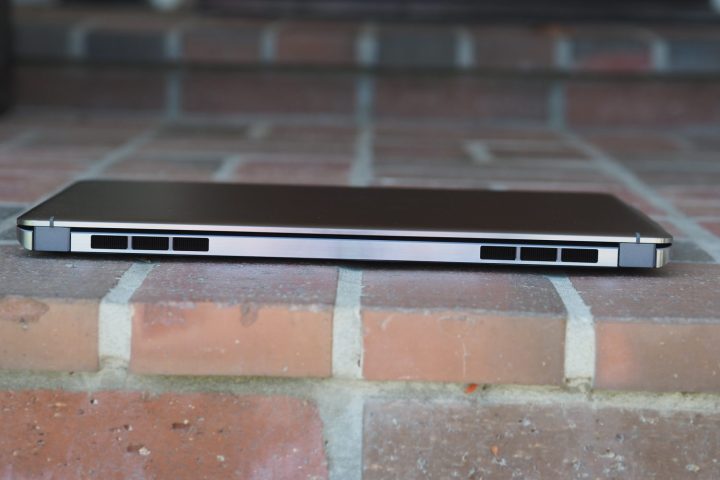
The Nvidia RTX Studio drivers don’t provide the best gaming performance compared to Nvidia’s standard drivers. In addition, MSI set a TGP for the RTX 3080 Ti of 90 watts, compared to its maximum of 150 watts. You can see this immediately in the 3DMark Time Spy test, where the Creator Z16P fell behind the other laptops with the RTX 3080 Ti. In addition, despite all frame-limiting settings turned off in the system and in the games, frame rates were locked at 60 frames per second (fps). I reached out to MSI to resolve the situation and could not come up with a solution.
So, the Creator Z16P didn’t do well in our gaming benchmarks. First, Civilization VI wouldn’t go higher than 60 fps no matter what settings I applied, a situation that I discovered applied across the board. In Assassin’s Creed Valhalla, it managed just 55 (fps) at 1080p and ultra high graphics, which is less than the MSI Creator Z17 with an RTX 3070 Ti. Its performance was also very inconsistent in this benchmark, hitting just 33 fps at 1440p and high graphics and 43 fps at ultra high. In Cyberpunk 2077, the Creator Z16P managed just 30 fps at 1080p and ultra graphics. Again, the laptop was inconsistent, hitting the same 30 fps at medium graphics but then managing 41 fps at 1440p and ultra graphics.
In short, gaming on the Creator Z16P was a real disappointment. The display’s fast 165Hz refresh rate is completely wasted, and one can only hope that there were issues with the drivers on my review unit that MSI might be able to address.
| Assassin’s Creed Valhalla (1080p/1200p Ultra High) |
Cyberpunk 2077 (1080p/1200p Ultra) |
Civilization VI (1080p Ultra) |
Fortnite (1080p/ 1200p Epic) |
3DMark Time Spy |
|
| MSI Creator Z16P (RTX 3080 Ti) |
55 fps | 30 fps | 60 fps | 60 fps | Bal: 9,251 Perf: 10,054 |
| MSI Creator Z16 (RTX 3060) |
50 fps | N/A | 92 fps | 56 fps | Bal: 6,322 Perf: N/A |
| Dell XPS 17 9720 (RTX 3060) |
23 fps | 45 fps | 111 fps | 111 fps | Bal: 6,757 Perf: 6,958 |
| MSI Creator Z17 (RTX 3070 Ti) |
60 fps | 61 fps | N/A | 85 fps | Bal: 8,763 Perf: 9,263 |
| Razer Blade 17 (RTX 3080 Ti) |
83 fps | 52 fps | 193 fps | 104 fps | Bal: 12,634 Perf: N/A |
| MSI GE76 Raider (RTX 3080 Ti) |
93 fps | N/A | 169 fps | N/A | Bal: 12,421 Perf: N/A |
Display and audio

There’s just one display option with the MSI Creator Z16P, and it’s a 16-inch 16:10 QHD+ (2,560 x 1,600) IPS touch display running at 165Hz. During my testing, the display was extremely bright with dynamic colors that weren’t blown out or oversaturated. Blacks were true enough that text popped on a white background. It was an enjoyable display.
When I applied my colorimeter, I found a panel just on the verge of being excellent. Brightness was high at 461 nits, well above our 300-nit standard, and the contrast was 990:1, just below our preferred 1,000:1 threshold. Colors were wider than average at 100% of sRGB and 89% of AdobeRGB, with an accuracy of DeltaE 0.89 (less than 1.0 is considered excellent). The Dell XPS 17‘s IPS display is significantly better across the board, but the Creator Z16P’s display matched the other IPS panels in our comparison group.
Of course, OLED displays are also superior, as with the Dell XPS 15. The MacBook Pro 16’s mini-LED display had better contrast but not much wider colors and it was less accurate. Note that the contrast difference between the OLED display and the MacBook’s is due to a difference in colorimeters used to test them; they both provide equally inky blacks.
The only thing holding the display back from being an optimal choice for creators is the AdobeRGB gamut. Typically, we like to see this number in the 90s. However, it’s still good enough for all but the most demanding professionals, and it’s a step up from the display on the Creator Z16.
| Brightness (nits) |
Contrast | sRGB gamut | AdobeRGB gamut | Accuracy DeltaE (lower is better) |
|
| MSI Creator Z16P (IPS) |
461 | 990:1 | 100% | 89% | 0.89 |
| MSI Creator Z16 (IPS) |
382 | 800:1 | 92% | 71% | 1.28 |
| Dell XPS 17 9720 (IPS) |
543 | 1,870:1 | 100% | 100% | 0.58 |
| Dell XPS 15 9520 (OLED) |
391 | 28,130:1 | 100% | 96% | 0.42 |
| Apple MacBook Pro 16 (XDR) |
475 | 475,200:1 | 100% | 90% | 1.04 |
| Razer Blade 17 (IPS) |
313 | 890:1 | 100% | 90% | 0.84 |
| MSI Creator Z17 (IPS) |
355 | 840:1 | 100% | 87% | 1.35 |
Four speakers, two downward-firing on the bottom of the chassis and two upward-firing above the keyboard, put out significant volume. It’s enough to fill a medium-sized room, and the quality was good, with clear mids and highs and a touch of bass. You won’t need a pair of headphones for music and Netflix binging.
Keyboard, touchpad, and webcam

The per-key RGB lighting on the keyboard is fun but unnecessary. Fortunately, that’s not this keyboard’s defining feature. Rather, the keyboard has excellent spacing and nicely sized keycaps, with light and precise switches featuring a crisp bottoming action. It’s as good as the keyboard on laptops like the Dell XPS 17, which is high praise.
The touchpad is nicely sized and significantly larger than its predecessor, with a smooth surface that supports Microsoft Precision touchpad drivers and the entire repertoire of Windows 11 multitouch gestures. The clicks are quiet and confident, a drastic improvement over the Creator Z16’s loud and stiff buttons.
The display is also touch-enabled, providing another convenient way to control the operating system. Oddly enough for a clamshell laptop, there’s support for an active pen that’s included in the box. It not only supports Windows 11 inking but provides a remote mode via Bluetooth for controlling presentations.
Windows 11 Hello passwordless login is provided by both an infrared camera with facial recognition and a fingerprint reader on the palm rest. In my testing, both methods were fast and reliable.
Finally, the webcam is a Full HD version, which was great to see. Video quality was excellent in both bright and low lighting conditions, making the Creator Z16P a great machine for videoconferencing.
Battery life

The Prestige Z16P has 90 watt-hours of battery capacity, which is a decent amount for a laptop with a large, high-resolution display and fast components. But it’s no guarantee of great battery life, which we didn’t see in the Creator Z16 with the same size battery and a slower CPU.
In our web-browsing test that cycles through some popular and complex websites, the Prestige Z16P managed just 4.75 hours, the kind of score we usually see with gaming laptops. The Dell XPS 17 lasted almost three hours longer. In our video test that loops a local 1080p movie trailer, the MSI hit 5.5 hours, another low score that the XPS 17 beat handily. Finally, in the PCMark 10 Applications battery test that’s the best indication of productivity battery life, the Prestige Z16P shut down at around 5.5 hours,
Of course, the standout here is the Apple MacBook Pro 16, which thoroughly trounced its Windows competition despite being roughly as fast. The Prestige Z16P was embarrassed by the MacBook’s longevity.
The Prestige Z16P isn’t a highly portable workstation. Do any kind of intensive creative work, and you’ll probably run out of juice in a couple of hours. The power brick is large and heavy, so plan accordingly.
| Web browsing | Video | PCMark 10 Applications |
|
| MSI Creator Z16P (Core i9-12900H) |
4 hours, 42 minutes | 5 hours, 24 minutes | 5 hours, 37 minutes |
| MSI Creator Z16 (Core i7-11800H) |
5 hours, 20 minutes | 8 hours, 12 minutes | N/A |
| Dell XPS 17 9720 (Core i7-12700H) |
7 hours, 36 minutes | 13 hours, 5 minutes | 7 hours, 3 minutes |
| Dell XPS 15 9520 (Core i7-12700H) |
9 hours, 38 minutes | 12 hours, 40 minutes | 11 hours, 14 minutes |
| MSI Creator Z17 (Core i7-12700H) |
4 hours, 23 minutes | 4 hours, 32 minutes | N/A |
| Razer Blade 17 (Core i7-12800H) |
3 hours, 11 minutes | 3 hours, 41 minutes | N/A |
| Apple MacBook Pro 16 (Apple M1 Pro) |
18 hours, 35 minutes | 23 hours, 11 minutes | N/A |
Price and configurations
The MSI Creator Z16P comes in four costly configurations. The entry-level model is $2,899 with a Core i7-12700H, 16GB of DDR5 RAM, a 1TB PCIe 4.0 SSD, and an Nvidia RTX 3070 Ti. At the high end was my review unit, which costs $4,299 and includes the Core i9-12900H, 64GB of DDR5 RAM, a 2TB PCIe 4.0 SSD, and an RTX 3080 Ti.
Our take
The MSI Creator Z16P is one of the faster Windows machines you can buy for creative work, and its display is good enough for all but the most demanding creators. It’s also a very expensive laptop, meaning it’s an investment best made by those who need the utmost in performance and don’t want to switch to MacOS.
Gamers should definitely look elsewhere, though, because the Creator Z16P severely underperformed in this area. I’m not sure if it was a driver or hardware problem, but the laptop simply didn’t live up to its potential.
Are there any alternatives?
There are several great laptops with larger displays aimed at the creative market. One is the Lenovo ThinkPad X1 Extreme, with a fifth-generation on the way with Intel 12th-gen CPUs. It’s a solid machine with similar specifications and a more affordable price.
Two options if you’re willing to go a little smaller or a little larger are the Dell XPS 15 and 17. Both also offer Core i9 CPUs, but their GPUs aren’t as powerful. They’re more portable, however, and less expensive, making them great options for those whose creative tasks are a bit less demanding.
But maybe the most compelling competitor is the Apple MacBook Pro 16. When configured with its Apple M1 Max CPU, it’s as fast as the Creator X16P and around the same price. Its display is better, and you won’t find a machine with a higher-quality build.
How long will it last?
The MSI Creator Z16P is well-built, and that’s a good thing given how expensive it is. The components are up to date and should keep you creating content for many years. MSI offers one year of accidental damage protection with a limit of one claim per laptop. Otherwise, the industry-standard single year of warranty protection is disappointing at these prices.
Should you buy it?
Yes, if you’re a creator who demands the most performance. If you’re a gamer, though, you’ll want to consider a different machine.


